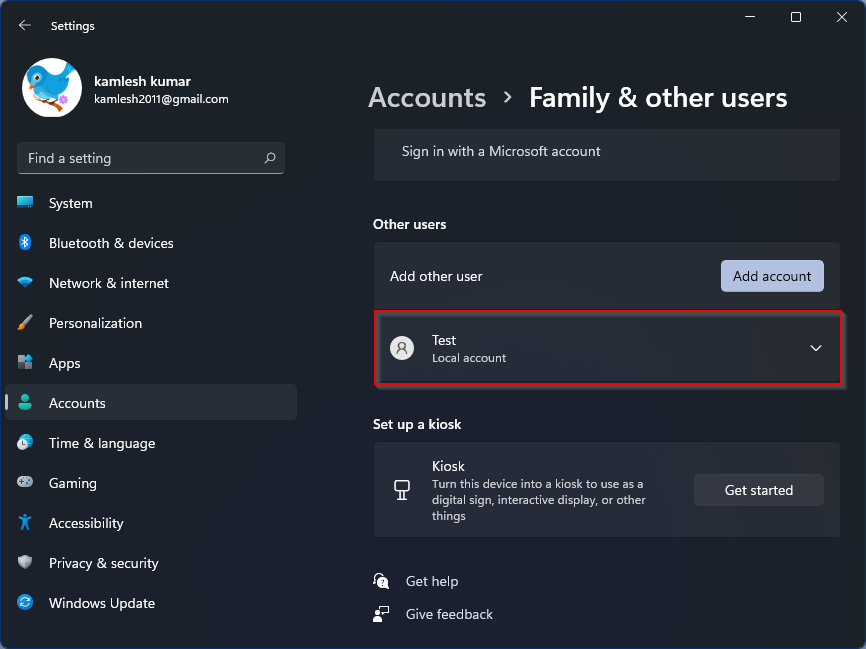

- #Cpanel how to add another user code
- #Cpanel how to add another user download
- #Cpanel how to add another user windows
If your Web App is running on Windows then you can achieve this with a web.config placed in the i.e. In such a situation instead of sending the actual request, the browser will make a 'preflight' request to the Server to determine if Server has enabled resource sharing with the current Domain. Azure App Services (Web Apps) are publicly exposed to the Internet by default, accessible with their *. URL. I created an additional function in the same Function App as before (see this post and this post). , we need to create a function proxy that redirects all traffic to our function app. I will not go into the details about how to do so, but that can be done from Azure Portal -> your VM -> Network Interface -> IP Configuration -> Add. In our example, we will be using library for authentication (Azure AD). Suppose our web app name was demo-site and we want to web deploy the app under demo-site\folder\sub-folder.

If you have created your App Service on Azure but it redirects to a localhost instead of the Azure website URL upon authentication, there are some changes you will have to make in your Web.config file. Let's say the domain I want to actually redirect is az. so what I'll do now is 1) create a CNAME entry in DNS pointing az. to, and 2) add az. as a custom domain to the App Service. To test some of this, we have installed CDN-Enabler and configured it to use.

Wait till it's installed and then restart the service (which you can find in the 'Overview') To make a redirect rule, create a new rule to Application Gateway and give a descriptive name for it. So I thought: an Azure Function would be perfect for this! I chose to use a Logic App, as it's such a rapid way to prototype. htaccess on an Azure Web App with Linux+Apache. I'm trying to configure rewrite rules with.
#Cpanel how to add another user code
By using the placeholder path, we can later use that part in the code to parse the origin url and append it to the " " in this case and click Validate. Scroll down and find the Domains - Redirects icon, as shown in the photo. Click on the " Custom Domains " option on the left blade and click " + Add Custom Domain ". Click on 'Go' and you will be re-directed to the Kudu service for your Web App. Azure App Service Authentication requires HTTPS so we need to configure an SSL. an outbound URL (coming from the web app) that has 'signin-oidc' in the path. All I had to do was create the "web.config" file in 4443. The tracking data is stored in another Azure Table called Analytics. However, client auth can't be enabled this way in Azure but must be done via the configuration page of the service. The initial question was more specific to Azure App Service WebApps, but you are leveraging Azure CDN service for this, you may take a look at this feedback post and upvote: Naked Domain CDN.Also, checkout the suggestions outlined in this discussion thread: Mapping a CDN to my naked domain. I often create a canonical host name URL Rewrite rule for a production site so that requests redirect to a single domain - for example from to sites hosted with Azure App Service using deployment slots, we only want the production slot to redirect, otherwise going to the staging slot will redirect you to production since each slot uses uses the same. I'm seeing the same behavior using example 1-1, deployed to a regular Azure App Service (not docker). For example For example, if you previously had a beta version of your site, and you want to retire it for a period of time and send everyone to the launched site.

According to the OAuth 2.0 specification (section 3.1.2 of RFC 6749), a redirection endpoint URI must be an absolute URI. the app service URL is exposed in the browser when there's a redirection an example of this: an OIDC authentication flow is broken because of a redirect with wrong hostname this includes the use of App Service Authentication and Authorization Broken cookies cookies are not propagated between the browser and the App Service URL redirect services with global reach.
#Cpanel how to add another user download
To do that, Download the publish profile. Below are the steps, that I followed to analyze the problem. Firstly, there's two menu option to open the rules engine, HTTP Large and ADN.


 0 kommentar(er)
0 kommentar(er)
